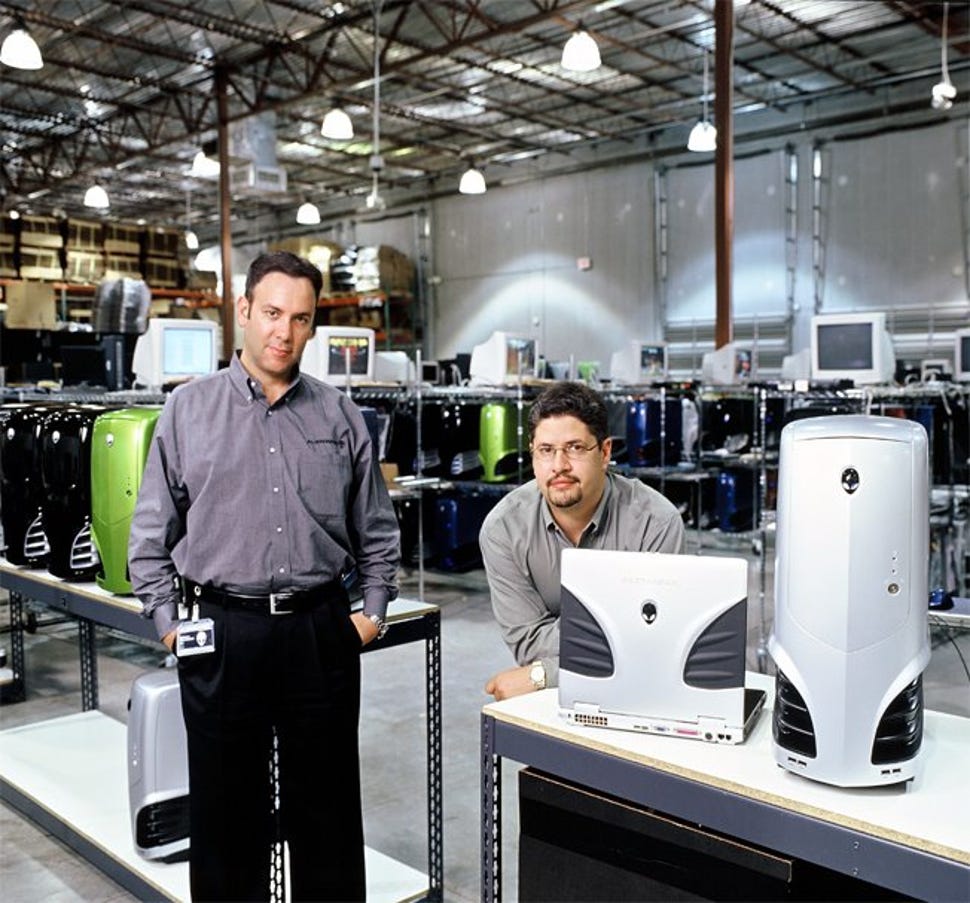This was the first in a two-part series looking at the PC maker Alienware. You can read the second story: here.
By Ian Sherr and Dan Ackerman
Imagine it’s 1996, and you just finished watching FBI Special Agent Fox Mulder break out of a Russian gulag in his search for the truth about aliens, government conspiracies and the paranormal.
Nelson Gonzalez couldn’t get enough of TV shows like “The X-Files,” “Star Trek,” “The Outer Limits” and “Lost in Space.” It was a golden age of sci-fi, accented by movies like “Independence Day” and “Mars Attacks!”
All that sci-fi inspired Gonzalez, who, with his childhood friend Alex Aguila, decided to start a new kind of PC company. They named it Alienware.
Why did the world need a new kind of PC company? For Gonzalez and Aguila, the answer was summed up in one word: games. Both were into gaming, big time. But PCs at the time weren’t able to deliver the horsepower needed for fast-moving, realistic games like the flight simulators Gonzalez played. So Gonzalez convinced Aguila to quit his job, pitch in $5,000 and co-found a company to build custom PCs for gamers like themselves. They maxed out their credit cards, racking up $13,000 in debt to get Alienware off the ground.
But a computer dedicated to gaming is by definition a niche gadget, and its creators knew it wasn’t going to be an obvious or easy sell. They prayed they could sell at least 50 to 100 machines a month.
“A lot of people thought we were nuts,” remembers Gonzalez, now 52. “The only people that understood us was us — the gamers.”
Fortunately, gamers got it. Now, 20 years later, Alienware is one of the most recognizable gaming PC makers in the world, thanks to innovations like computers cooled with water and laptops packed with enough tech to keep up with high-performance games. Dell bought the company in 2006, but Alienware has remained true to its roots, selling niche machines with unusual designs to a gaming PC market that represents just a fraction of the 276 million PCs shipped every year.
Alienware’s effect on PCs and gaming isn’t about numbers, though. It’s about, as any gamer will tell you, the origin story.
When aliens meet hardware
Gonzalez and Aguila came up with the idea for a gaming computer after realizing how hard it was to replace parts in their PCs so they could play the newest, most exciting games. Back then, titles like Microsoft’s Flight Simulator, ID Software’s shooter game Doom or a murder mystery thriller based in a futuristic New York called The Ripper needed powerful computers, stuffed with extra video and graphics tech, to play at their best.
So Gonzalez became a “tech guy,” building PCs for friends out of his garage. Then he realized other people might want to buy them too.

Alienware co-founders Nelson Gonzalez and Alex Aguila. / Alienware
For the company name, they mixed the words “alien” and “hardware.” Gonzalez wanted something that started with the letter A so it would be at the front of the Yellow Pages. “It almost became AAAlienware,” joked Arthur Lewis, another childhood friend of Gonzalez and Aguila who later served as Alienware’s president and CEO.
In 1997, the company created its first custom-built desktop computer, the Blade.
On a whim, Gonzalez began sending the machine to reviewers at popular magazines like PC Gamer. The response was better than he could hope for. He followed with the Area-51, named after the secret military base thought to be filled with alien technology collected by the US government. Boot magazine praised its speed and design, such as the extra fans that allowed owners to eke out even more performance. “The Area-51 computer is a remarkable device,” the magazine wrote.
